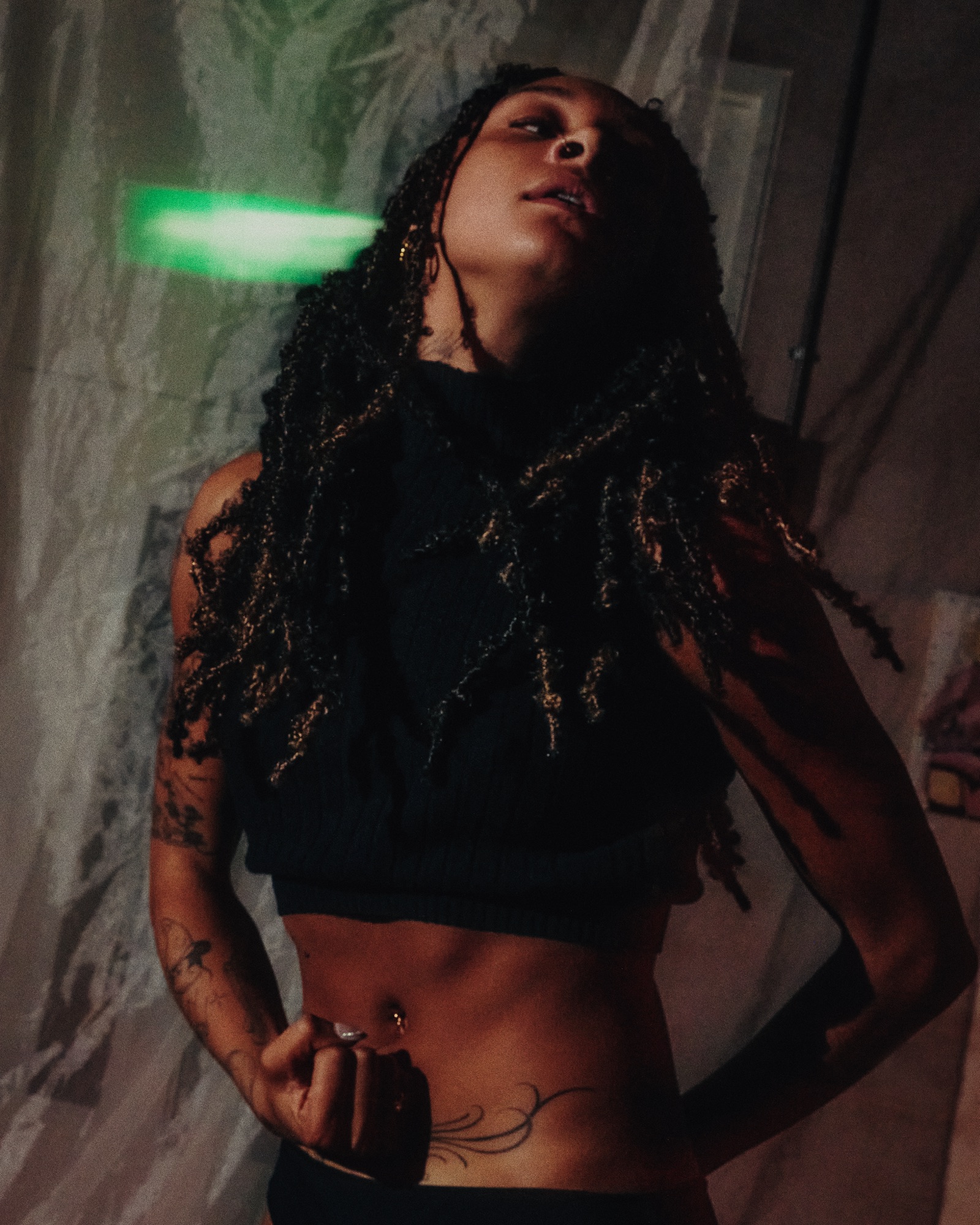Words by Sarah Lapinsky.
Where does care fit in art? It can be difficult to locate it at all in this hectic world. Care describes a thoughtful “how” in the intent of effort, whether that’s brush strokes, angles or movement qualities. It encompasses the emotional attitude towards creation, often overcoming the fear of vulnerability, naysayers and censorship (from self or others). Care can often distinguish one artist from another in their approach and attention towards what is important to them. At the same time, how do we as spectators bring care to the art we consume? How can we manage the intimacy of connecting with someone’s work?
At the sixth WMN* event held on 18 July, five wonderful artists respond to these ideas of care and intimacy. The event presents art across multiple disciplines, with this iteration showing photography, paintings, film and a dance performance by Salomé Pressac. The performance was followed by a rich panel discussion led by Ella Monnerat, before DJ Nina Signorina shared a set so everyone attending could move these ideas through their bodies.
Elettra Giunta, the organiser and curator of the event, who welcomed us to the evening, explained her aim to create a platform to showcase the work of women and nonbinary creatives. As a choreographer and movement director herself, Giunta spoke about her desire to bring dance into dialogue with other forms, as it can often feel isolated to the designated performance spaces we know.
As a venue, Reference Point was fittingly cool, lined with art books, lit in glowing red and spacious enough to invite wandering. I started with Ambrosia Fortuna’s photographs, displayed on a table. At first glance, the varying poses seemed emotive, even uncomfortable to hold. I was puzzled as to how they related to each other, eventually realising they were organised alphabetically. Each letter embodied and carried its own expressive weight.
On the wall hung photographs by Yolanda Liou featuring two models beautifully comfortable in their skin. Later in the panel discussion, she discussed how working on this project helped her to understand her relationship to her own body image— an intimate and ongoing act of care. Next to the photographs hung Susan Kellaway’s paintings like The Underdog, which suggested a meeting point of shame and seduction.
Projected nearby, clips from films by Joy Gharoro-Akpojotor celebrated Black queer love through artfully intimate scenes. These moments were supported by intimacy coordinator El Wood, a role Joy emphasised during the panel as essential for building trust and safety on set. Hearing the artists speak so candidly about boundaries and consent gave me hope for a more ethical future in the film industry.
I appreciated that each work presented the body, and even though they were not all moving, the celebration of our physical form as a caring and intimate act set the scene for the dance to take the stage.
A drone played over the speakers as Pressac began carefully walking into the space on relevé before balancing behind a sheer, white cloth hung from the ceiling. Reaching up and clasping her hands, she stretched her arms deep behind her, almost hitting the maximum before rotating out of it. A soft driving beat began and she stepped forward from behind the cloth. The space was small and intimate, but not confronting. We held and shared the space together where we could inhabit it. I felt welcomed to watch and be part of a community.
Her movement oscillated between expansive and contained, as if her body were being pulled by many strings out of her control. The movement revealed influences of the Eyal creature, Ohad’s pauses and the precision of McGregor with the punctuating expressions of Larbi. Still, this movement was unique to Pressac as she claimed the space and shared the sensuous experience of movement.
As the energy of the music built, the striking energetic shifts punctuated by the flash of a camera emphasised the emotionality behind the abstracted movement. I was surprised when she moved beyond the outlined performance area into the space, but it did not feel jarring or unwelcome. It felt like she was joining us in our space and the barrier between audience and performer blurred. In the final moments of the piece, when the music began to fade, Pressac seemed to melt into the ground. I could imagine what the cold concrete floor must have felt like on her face as she found a final pause.
While the evening did not offer a single answer to where care fits in art, perhaps that is the point. Art is individualistic, as is care, and hearing from this talented group of artists, it was clear that building trust in yourself and learning to offer yourself care can be the most important part of the process. Through the evening, the theme resonated beyond the works into the space and between the people connecting in the room.
Image by Shokirie Clarke.
